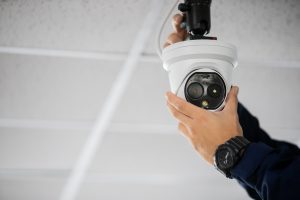Are you annoyed by the constant deterioration of your television’s aerial signal? An unstable or weak TV signal can turn your relaxing evening in front of the telly into a frustrating battle against static and distorted images.
We rely on a stable and clear TV signal to catch up on our favourite shows, cheer our favourite teams on and stay updated on current events. However, the signal strength and quality can sometimes be disrupted due to various factors.
This blog post will explain the mechanisms of TV aerial signals, delve into the factors that can influence their strength, highlight the common causes of weak signals, and provide practical solutions.
Understanding TV Aerial Signal
At TV Local, we understand that television signals operate on a fairly simple principle. Broadcasters transmit the signals, which are then received by your television’s aerial.
The strength and clarity of these signals can determine the quality of your viewing experience. The smoother and stronger the signal, the clearer your television picture will be, allowing for a more enjoyable viewing experience.
However, as straightforward as this might seem, several factors can negatively influence your TV aerial signal.
These factors, which can range from faulty hardware to environmental conditions, can weaken the signal strength, leading to a suboptimal viewing experience. Understanding these factors and how they influence your signal is the first step to solving any TV signal issues.
Factors That Influence TV Aerial Signal Strength
A variety of elements can play a role in determining the strength of your TV aerial signal. For instance, physical obstructions such as tall buildings or trees can block or weaken the signal.
Similarly, the further away you are from the broadcasting station, the weaker your signal is likely to be, as the strength of a TV signal tends to decrease with distance.
Weather conditions can also impact your signal strength. Heavy rain, high winds, or even sunspots can cause signal disruption.
In addition, interference from other electronic devices in your home or nearby can distort the signal. Understanding these factors can provide a clearer picture of what might be causing your TV signal issues and how to best address them.
Top Causes of Weak TV Aerial Signals
Hardware Issues
One of the most common causes of a weak TV signal is hardware issues. This could be a damaged or old aerial that is not capable of receiving signals effectively. Even something as simple as a loose connection or faulty cables can lead to signal problems. An aerial that is misaligned and not pointed towards the best signal source can also result in a weak signal.
Environmental Factors
Environmental factors can often negatively impact your TV aerial signal. For example, physical obstructions such as buildings or trees can block or deflect signals. Extreme weather conditions, such as heavy rain or high winds, can disrupt signal transmission and cause signal loss.
Additionally, interference from other devices, such as mobile phones or Wi-Fi routers, can also distort your TV signal.
Location Issues
Your location can significantly impact the strength of your TV aerial signal. If you’re far from the transmission tower, your signal is likely to be weaker. Similarly, the local terrain or topography can affect signal strength. If you’re in a valley or behind a hill, the signal might not reach your aerial effectively, leading to a weak signal.
Top Solutions to Improve Your TV Aerial Signal
Hardware Solutions
The first step in addressing a weak TV aerial signal is to check your hardware. This includes inspecting the aerial, the cables, and the connections. If the aerial is old or damaged, it might be time to invest in a new one. Ensure that your aerial is correctly aligned for optimal signal reception.
Environmental Solutions
Mitigating environmental factors can greatly improve your TV aerial signal. If possible, move any physical obstructions that might be blocking your signal. In areas where the signal is weak, consider using a signal booster. This device amplifies the signal, improving reception and, in turn, your viewing experience.
Location Solutions
If your weak signal is due to your location, you might need to relocate the antenna to a place where it can receive a stronger signal. If this doesn’t help, consider upgrading to a higher gain antenna that can pick up weaker signals more effectively.
Professional Help for Weak TV Aerial Signals
Sometimes, despite your best efforts, you might not be able to resolve your TV signal issues. In such cases, it might be beneficial to seek professional help.
A professional can conduct a thorough assessment of your situation and offer the most effective solutions. They have the knowledge and the tools to address even the most complex signal issues.
Hiring a professional can save you time and effort, and ensure that your problem is solved effectively. A professional can quickly identify and address the problem, allowing you to return to your normal viewing habits as quickly as possible.
Conclusion
Experiencing weak TV aerial signals can be a frustrating ordeal. However, by understanding how signals work and the various factors that can influence them, you can take effective steps to improve your viewing experience.
Whether it’s replacing faulty equipment, mitigating environmental factors, or seeking professional help, there are many solutions to this common problem.
Remember, a strong and stable TV aerial signal doesn’t just improve your viewing experience; it ensures that you can relax and enjoy your favourite programmes without disruption.
Don’t let a weak signal spoil your viewing pleasure – take the necessary steps today to ensure a crystal-clear picture and high-quality sound. Get in touch with us today for more information.





